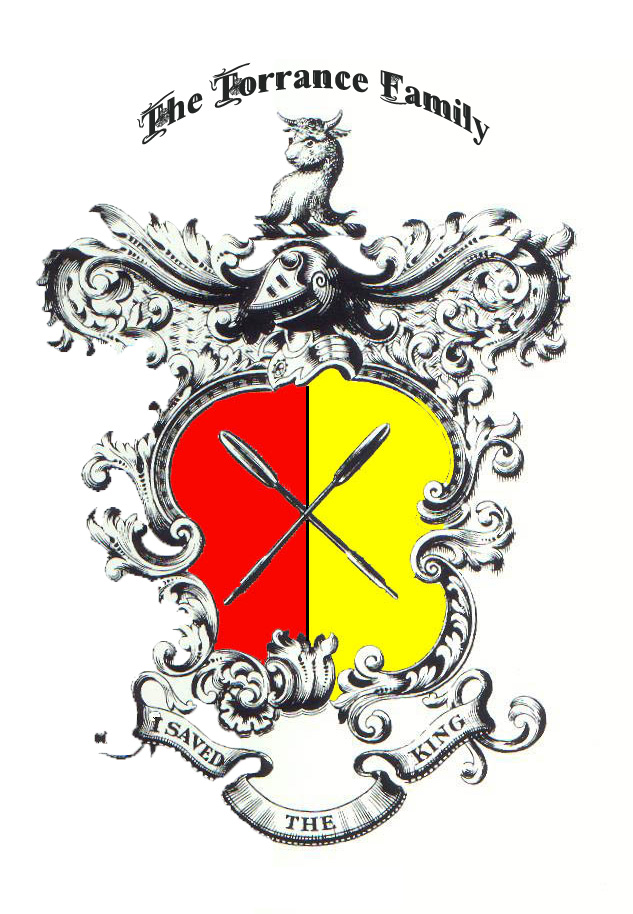The Torrance Family

The Story of Robert The Bruce
From the death of David in 1153, to that of Alexander III in 1286, Scotland was comparatively peaceful and prosperous. Following this period, wars with England, feuds of the nobles, clashes as to sovereign rights of succession, and intrigues kept the population away from productive pursuits and resulted in the destruction of their homes and institutions. (Encyclopedia Brittanica, vol 24, p.429).
Robert I, ¨The Bruce,¨ King of Scotland, lived during these stormy periods. Whereas he had English and Scottish estates and was a friend of Edward I, king of England, his patriotic feelings for Scotland and its ultimate independence led him to make a decision as to which course to follow. His father died in 1304. It was about this time that Bruce made an alliance with William Lambroton, which bound them together in all their future activities and resulted in freedom for Scotland, as well as, for Bruce, a crown.
King Edward I, of England, soon became aware of the intentions of Robert Bruce and instituted a bitter warfare against him
Bruce collected his adherents in the southwest, passed from Lochmaben to Glasgow and thence to Scone, where he was crowned King of Scotland on March 27, 1306. Two days later, Isabella, countess of Buchan, repeated the ceremony.
Though a king, Bruce had not yet a kingdom, and his efforts to obtain it were a disastrous failure until after the death of Edward I. Bruce and his followers met with one defeat after another. In June,1306, he suffered a defeat at Methven, and on August 11th he was taken by surprise at Stratfillan, where he had sought refuge. Whereas he managed to escape, three of his brothers were executed, and the ladies of his family were captured and sent to Kildrummy.
With but a few followers, he decided to flee to the Island of Rathlin, which lies between the extreme southwest peninsula of Scotland, Mull of Kintyre, and the northeast coast of Ireland. While wandering down this peninsula, they had about given themselves up as lost when a fishing-boat was sighted. They hailed the boatmen, and asked if they might be taken across to the Island of Rathlin. This having been agreed to, the task was begun. While rowing across, the boatmen, unmindful of the storm, sung Gaelic songs. Bruce appeared to be much impressed with this, and asked their names, which they gave, as Torrance, and told him where they came from. Bruce did not reveal his own identity.
When Edward II became king of England he continued the active warfare against Bruce and his followers. On Monday, June 24th, 1314. the memorable Battle of Bannockburn was fought. bruce and his followers were completely successful. The independence of Scotland was established, and with this came a kingdom for Robert Bruce.
Some time after Bruce had established himself, he sent for the Torrances who had formerly come to his rescue. Out of gratitude, he made them a large grant of land in Lanark, and gave them the right to use the crest, ¨Two laurel branches in saltire,¨ with the inscription, ¨I saved the King.¨ Laurel branches, which are given to poets and singers, were doubtless selected by Bruce because of their having sung Gaelic songs, and the motto, because he felt that they had saved his life.